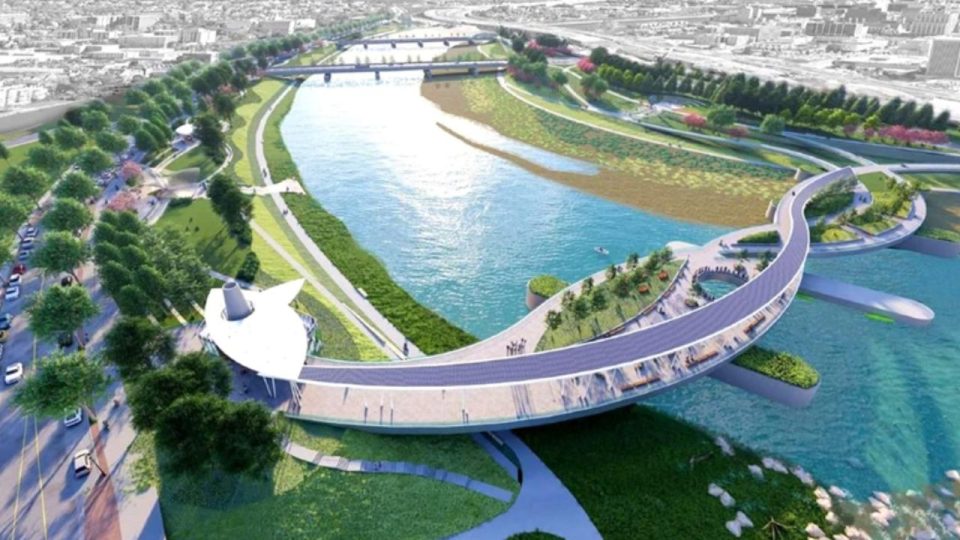
In a major boost, the Indrayani river development project received a new facelift on September 18 as work on two sewage treatment plants (STPs) and other components is set to be completed within the next year.
The Indrayani River Rejuvenation Project, of great cultural significance to the Warkari tradition and vital for nearly 50 lakh citizens in Pimpri-Chinchwad industrial town and surrounding rural areas, has secured approval from the State-Level Technical Committee (SLTC) under the Urban Development Department. The meeting, held in Mumbai on September 18, cleared the way for the initiative. The project, titled Namami Indrayani, will now move forward with administrative and technical sanctions, backed by funding under the Central Government’s AMRUT 2.0 scheme.
The development plan includes setting up 60 MLD sewage treatment plants at different sites, installation of water ATMs, public toilets, street furniture, chain-link fencing, compound walls, and a biodiversity park. The project is designed to integrate river conservation, flood control, sewage treatment, and beautification measures.
Chief Minister Devendra Fadnavis welcomed the approval, stressing that it would address four crucial areas—river conservation, flood management, water treatment, and beautification.
In a post on his official handle, the CM stated, “To control pollution in Indrayani River, approval has been granted by the State-level Technical Committee for two Sewage Treatment Plant projects. These will ensure four aspects are addressed—river conservation, flood control, water treatment, and beautification. The project, worth Rs 526 crore, will be implemented under AMRUT 2.0. Two plants with capacities of 40 MLD and 20 MLD will store rainwater for reuse. Polluted water will be diverted to STPs via interceptors, while flood control measures include check dams, strengthening riverbanks, and retaining walls. River tributaries will be rejuvenated, green zones developed, and afforestation carried out for ecological balance. This initiative will reduce pollution significantly and provide major relief to citizens.”
PCMC Commissioner Shekhar Singh told Mid-day, “We will issue tenders for STPs and other components now. The overall timeline is 30 months, though the STPs may be completed within 24 months.”
PCMC had proposed the scheme three years ago on the lines of the Namami Ganga project and submitted a detailed project report (DPR) to the government.
The Indrayani, flowing through the temple towns of Dehu and Alandi, holds a spiritual identity, with lakhs of Warkaris visiting during the annual Palkhi procession. A long-pending demand of the Warkari sect was to preserve the sanctity of the river.
The project will be implemented jointly with the Pune Metropolitan Region Development Authority (PMRDA), Alandi Municipal Council, Dehu Municipal Council, and both the Central and state governments. The DPR pegs costs at Rs 995 crore, with contributions of Rs 526 crore from PCMC, Rs 395 crore from PMRDA, and Rs 74 crore from the Alandi Nagar Panchayat. The state’s high-powered committee had already given in-principle approval three years ago.
According to civic officials, PCMC’s expenses can be reimbursed under AMRUT 2.0. The plan also covers bank development, wastewater collection and treatment from industrial drains, and coordination with MIDC and PMRDA.
Bhosari MLA Mahesh Landge, who spearheaded the proposal, said, “This project will be a role model for Maharashtra. Indrayani rejuvenation is special due to its spiritual importance and the presence of Alandi and Dehu pilgrim centres. It is the lifeline of Pimpri-Chinchwad and sacred to the Warkari community. The approval fulfills our promise to citizens. I thank the CM and state government for backing this initiative.”
Officials noted the project offers long-term solutions to chronic river pollution from untreated sewage and industrial effluents. It will address pollution through industrial and sewage run-off control while enhancing urban and peri-urban waterfronts. Plans include beautified riverbanks, new ghats for devotees, and removal of encroachments with public participation. Forts and ancient temples along the river are also set to be developed under an integrated plan.


